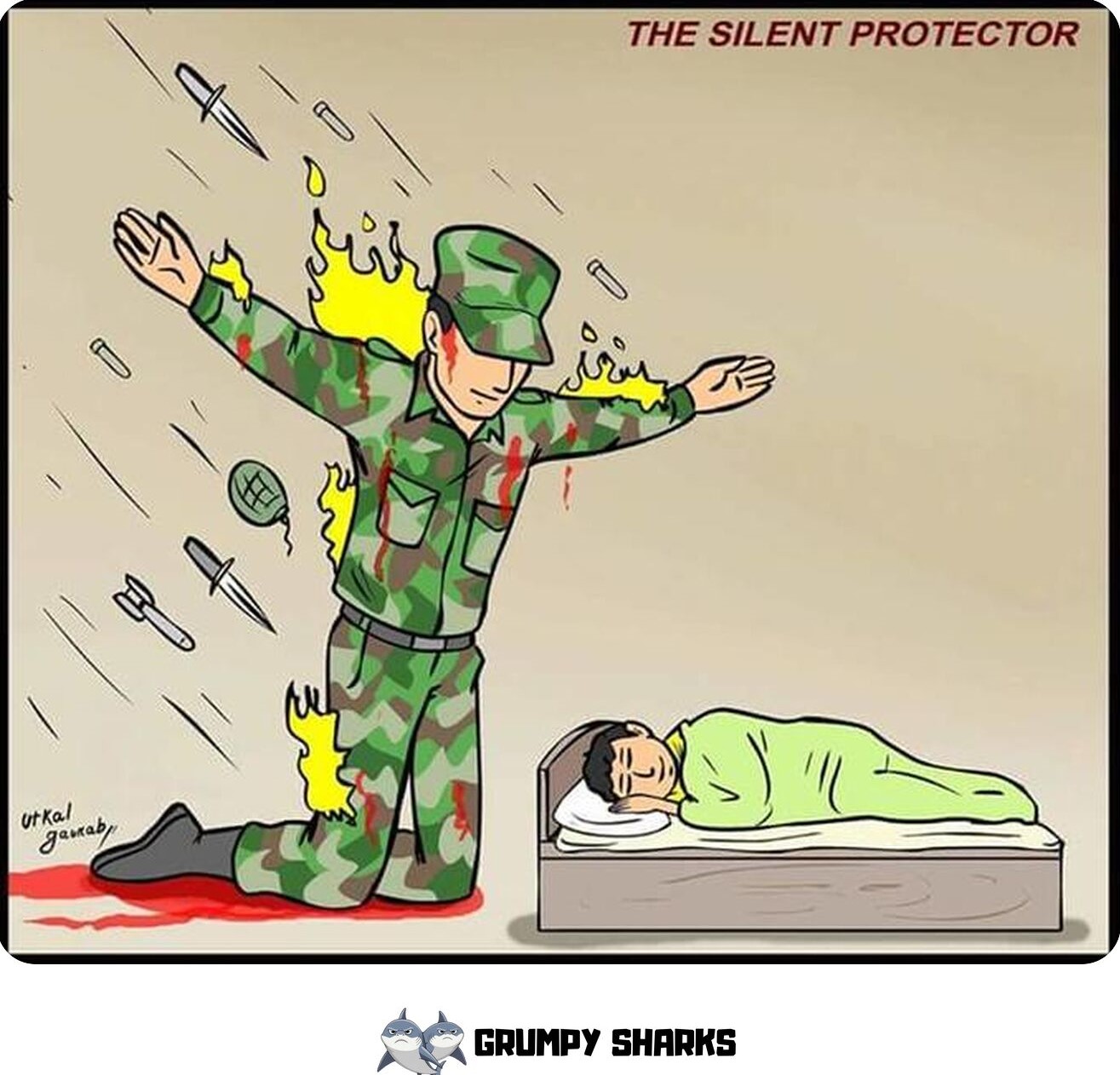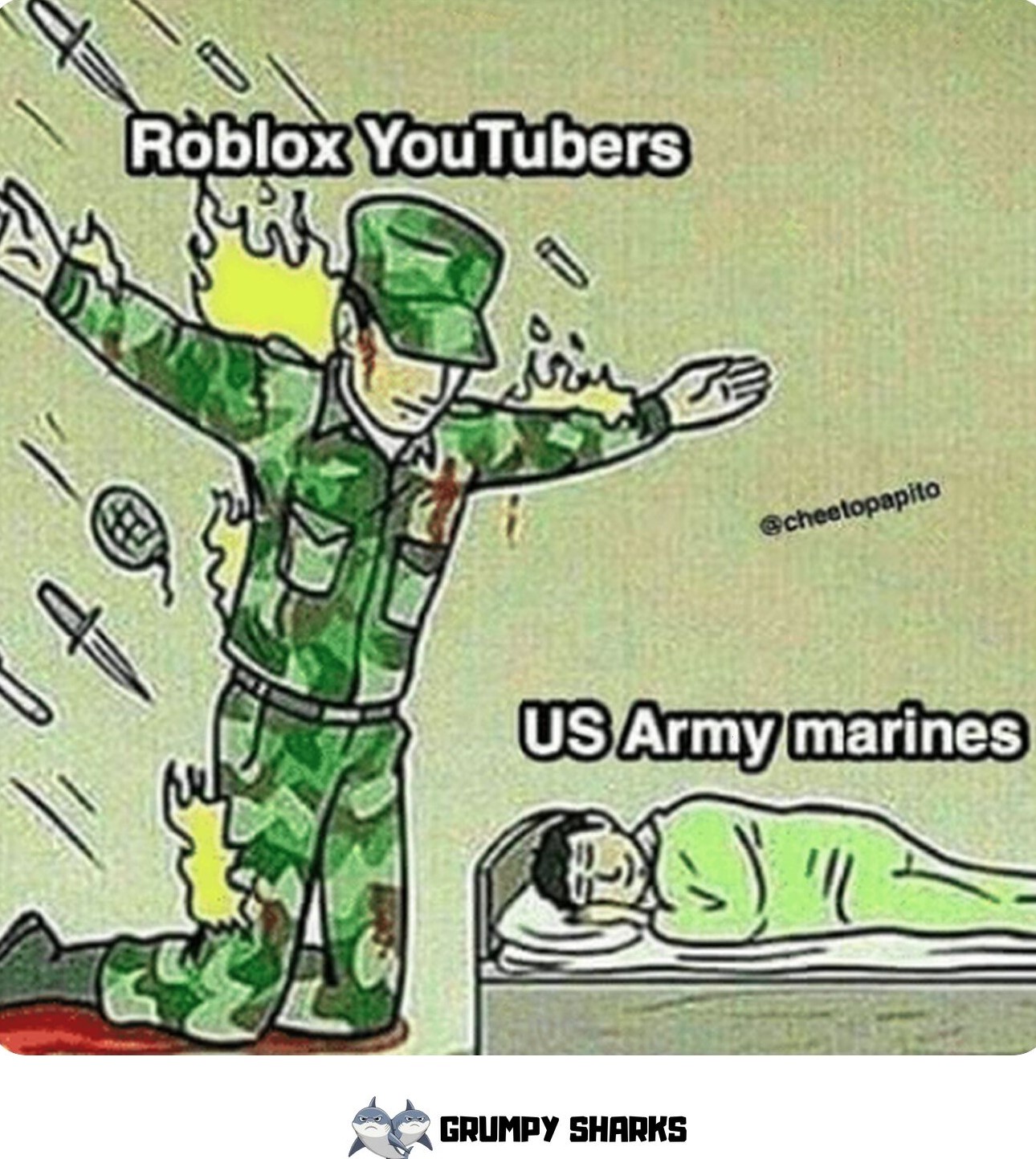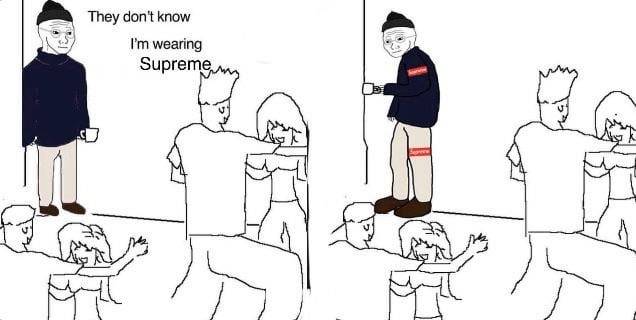Soldier Protecting Child Meme EXPLAINED: Why This Powerful Image Represents Silent Sacrifice
Soldier Protecting Child Meme (also known as The Silent Protector), gets at something that words can not convey; the silent, ceaseless act of safeguarding someone from the chaos of the world is one of the most selfless, invisible, and empathetic things one can do. The imagery of the solider hunched over a sleeping child as bombs fly all around them, has become an enduring symbol of this sacrifice and invisible work.
The soldier takes the shots labeled “parents,” “teachers,” “therapists,” and “veterans,” so that others do not have to. The very emotionally crushed and endlessly malleable format taps into deep pools of sentiment and universal comprehensibility online, into space, place, cultures, ideologies, and platforms.
#1 What Is the Soldier Protecting Child Meme?
The Soldier Protecting Child meme is a labeled comic image that depicts a large and heavily armored soldier, crouched over a sleeping child while missiles, knives, and explosions rain down to attack them both. Under the soldier’s mantle, the child is unaware and resting peacefully in bed. In meme form, each part of the comedic image—the child, the soldier, and the bomb—is labeled to represent various identifying forces in society.
The visual metaphor is pretty unambiguous and impactful: it suggests that someone or something, is taking on the violence of the world in order for someone (or something) else to sleep peacefully. This tragic juncture of heroism, silent perseverance, and unqualified emotional burden, gives where meme contains its popular viral sell.
#2 What Is The Origin of the Soldier Meme?
The original image was created by Indian comic book artist Utkal Gaurab, and published by the Facebook page Laughing Colours on October 5, 2016. As it quickly went viral, it reached over 491,000 likes and 117,000 shares in weeks. The first captionless version referenced as “The Silent Protector” resonated deeply and began spreading almost immediately across other platforms, like Twitter, Reddit and Imgur.
Two days later, it appeared on 4chan’s /pol/ board, spawning early edits and variants. By mid-2017, it was coming into full exploitation, because users began to replace the labels on the bombs, the soldier, and the child to reflect social issues, personal roles, or divisions based on beliefs/ideologies.
#3 How the Meme Spread and Evolved?
The original meme saw its popularity grow in 2016, but truly exploded at certain cultural points of stress. During the COVID-19 pandemic frontline health workers were pointed to as the soldier: protecting “the general public” from “infection”, “panic”, and “economic collapse”.
Teachers appeared often in 2020 – 2022 variants, protecting “students” from “remote learning chaos” or “budget cuts”. There was cross political usage of the meme – both liberal and conservative pages adapted this meme and made it their own messaging.
In media memetic contexts such as Reddit’s r/dankmemes and Twitter/X the meme evolved into both earnest tributes, and ironic reimaginings. What made a variant go viral depended on the context, but it appeared thoughtful commentary – often captured beyond the soldier, child, and “to be protected from” standard -captivated audiences.
For example, one variation came to categorize the child as “the entire tri-state area” and the soldier as “Perry the Platypus” – referencing the buzz of Phineas and Ferb fandom. Another variant humorously characterized “Roblox YouTubers” as soldiers, protecting kids from the “boring weft of education”.
#4 Why It Resonates So Strongly Online?
The Soldier Protecting Child meme resonates heavily because it hits at something human: the instinct to be protected—and what it means to be that protector. Its emotional weight is conveyed in its uncomplicated symbolism:
- The protector does not boast—the protector shields quietly.
- The child is asleep, oblivious to the threat.
- The audience sees the whole picture, and feels the weight of both roles.
The meme becomes a cathartic visual for too many overworked parents, underpaid teachers, unappreciated veterans, and tired therapists, providing a visual expression of invisible effort that allows for recognition, empathy, maybe even a tear or two.
Its usable object-labeling structure lends easily to remixing for satire or fandom. This dual-use of serious and silly is why the meme will last.
#5 FAQs About the Soldier Protecting Child Meme
1. Who created the original drawing?
Indian comic artist Utkal Gaurab, published through the Facebook page Laughing Colours on October 5, 2016.
2. Is the image based on a real photo or fictional artwork?
It is fictional, hand-drawn artwork created as a symbolic illustration—not derived from any real-life scene.
3. Why is this meme used for both serious and satirical content?
Its format is emotionally flexible. The object-labeling allows for both deep emotional messages and light-hearted parodies.
4. Can I customize the template for personal or educational use?
Yes! The meme exists in numerous editable formats across meme template sites. As long as it’s used respectfully, it remains a powerful tool for storytelling.
#6 Conclusion: A Silent Symbol of Selflessness
The Soldier Protecting Child meme continues to hold emotional weight years after its debut. After all the wars, pandemics, political upheaval, personal distresses, and all the chaos we find ourselves in now, this simple comic panel has a large emotional weight. The brilliance of the image is its simplicity: one figure takes the blows, namely one that takes the hits for another so they can rest.
This meme has been interpreted as a tribute to parents, a tribute to public servants, a metaphor for emotional resilience, and it has transcended generations, political ideals, and frontend and backend balances. It highlights the fact that peace and comfort−that we seldom receive for free−are someone’s daily job to “take the hits” for.
And perhaps, that’s why its reach is wide, and why we still share it to this day: because it says what a lot of us were feeling but don’t quite have the words for.










